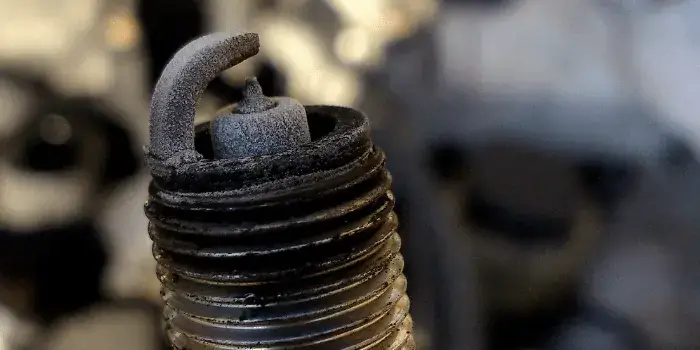It’s always stressful having an issue with your vehicle. Like most, you’ll wonder how much time and money it will cost.
Multiple factors can cause your car to stall in reverse, all of which are listed below.
- Clogged transmission lines
- Dirty fuel filter
- Gunked-up fuel injectors
- Sensors need replacing
- Weak or malfunctioning fuel pump
Troubleshooting 101: Why is Your Car Stalling in Reverse
Identifying the source of a mechanical issue is not always easy, especially if you are unfamiliar with how everything works. Here we will give you a list of common issues that may help you to troubleshoot why your car is stalling when in reverse.
Bad Sensors
One or more sensors may need to be replaced. The oxygen and throttle position sensors are two of the most common sensors to check if your car is stalling in reverse.
It can be difficult to know when you have a bad sensor; get an automotive technician to scan the vehicle’s computer for error codes. You could buy an OBD2 reader yourself to pinpoint the problem and then call around car shops to get quotes for replacing it.

Clogged Fuel Injectors
If your fuel injectors have carbon build-up on them, you will not get the correct air-to-fuel ratio which can cause your car to stall while in reverse.
Keeping your vehicle regularly maintained by a knowledgeable automotive technician can prevent issues like this from happening.
Another way to prevent fuel injectors from clogging is to regularly add a fuel treatment to your gas tank. Specially formulated solutions can be added to your gasoline to help loosen the carbon as the fuel passes through the injectors. A nice cheap fix!
Dirty Spark Plugs
At low speeds, whether when reversing or starting to increase speed in Drive, dirty spark plugs can cause your car to splutter and stall. The spark plugs ignite the fuel and oxygen mix that makes your car move. If they are clogged, and dirty poor performance and stalling occur.

Clogged Transmission Lines
Over time your transmission fluid can break down, or dirt and debris can build up in your transmission lines, causing a blockage. This is especially common in higher-mileage vehicles.
Most automobile manufacturers say that you don’t need to change or flush the system; however, over time, this proves to be incorrect in many cases.
Clean the fluid pan and change the lines to eliminate any debris. Add new transmission fluid, and you are up and running again.
Faulty Idle Control Valve
The idle control valve helps to control and maintain the vehicle’s idle engine speed. When this dirt and debris build up in this valve, it can cause the engine to stall because it is not getting the proper flow of air.
This issue can typically be corrected by spraying some carburetor cleaner/parts cleaner in the valve to remove the obstruction so the engine can breathe and function as it is supposed to.
Malfunctioning Ignition System
A malfunctioning ignition system is always a good start when troubleshooting why your car is stalling in reverse.
If you have one or more bad spark plugs, your vehicle will not get the spark it needs to keep the engine running properly.
The same goes for any bad ignition coils and wires. If any of these components are faulty, it can cause multiple issues with how your engine runs.
Poor Ground Connection
Sometimes the issue can be as simple as a loose ground wire. If you have checked everything and still cannot find the issue, it’s time to start checking the wiring.
Your vehicle has multiple ground wires that help different components of the vehicle run.
If your vehicle’s battery terminals are corroded, that can also be a reason for your vehicle to run improperly. Keeping your battery terminals clean and corrosion-free will help your car run optimally.
If your ground wires are not connected properly to the vehicle, it can cause a disturbance in how the engine operates. It can make the engine run poorly and stall. Thankfully a ground wire is generally a very easy solution that does not cost much.
Old Fuel Filter
If your vehicle cannot get the gas it needs to keep the engine running, it will most definitely stall out when in reverse or any other gear.
Fuel filters may get clogged with rust and debris from the bottom of your gas tank.
Thankfully replacing a fuel filter is generally a very simple and inexpensive task, so even if it was not the problem, you have not wasted much time or money.
Weak Fuel Pump
In addition to a clogged fuel filter, a weak or malfunctioning fuel pump will cause your vehicle to stall while in reverse.
If the pump is not working, it cannot transport the gasoline from the tank to the engine. Every fuel pump has a strainer that acts as a primary filter before the secondary inline fuel filter.
If your gas tank has debris in the bottom, it can get sucked up into the screen, which over time, will cause the pump to weaken and not deliver the gasoline through the system as it should.
Regular Maintenance Prevents Stalling When in Reverse
As you can see, there are several reasons why your car is stalling while you are in reverse.
Understanding what can cause this issue and keeping your vehicle regularly maintained by an automotive professional will reduce the likelihood of it stalling when you need it most.
A regular inspection schedule will keep you on the road and save you money over the lifetime of car ownership.





![Car Shuts Off When Turning - [TROUBLESHOOTER GUIDE] car-wheel-turn](https://carzaza.com/wp-content/uploads/2023/12/car-wheel-turn-300x150.png)







